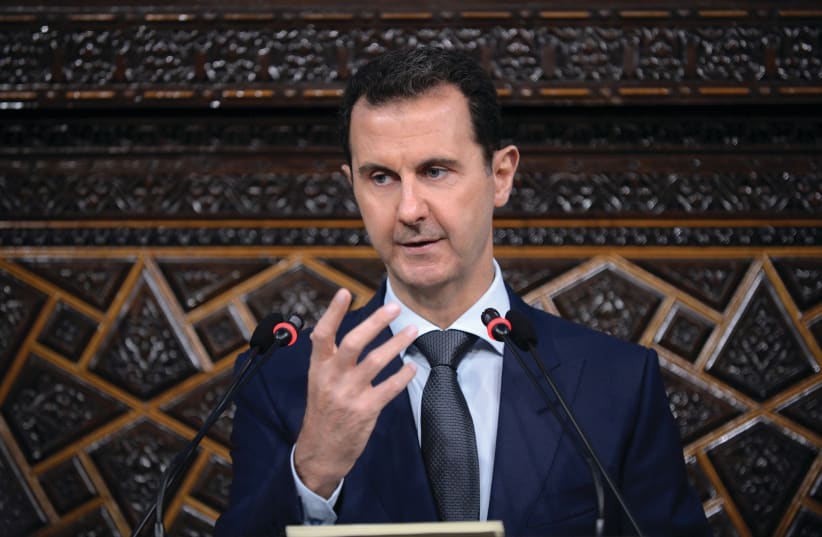On the night of April 22, social media accounts reported airstrikes near Deir ez-Zor. Soon thereafter, the Syrian military had reportedly had to deny that there was a “US attack on IRGC.” The report, also from Al-Masdar, noted that “all reports claiming the US air force bombed the IRGC near Albukamal are false.” The source said reports claiming the SDF and SAA clashed near Albukamal are false. The clashes actually involved ISIS fighting with the Syrian regime. Yet the reports of US “plots” go back several days, seeking to fuel tensions along the Euphrates River, where the US and SDF are stationed on one side, and Syrian regime and pro-Iranian militias on the other.Since the US left the Iran Deal and began exerting pressure on Tehran via sanctions, there have been tensions between the US and pro-Iranian groups in Syria and Iraq. This includes the Hashd al-Shaabi (PMU), a group of mostly Shi’ite paramilitaries in Iraq that are now part of the Iraqi Security Forces.In addition, some militias in the Hashd have openly threatened the US. This includes Asaib Ahl al-Haq and Harakat Hezbollah al-Nujaba. Harakat Hezbollah was listed as a terrorist organization in March by the US. The US has warned that any attack by pro-Iranian groups in Iraq would lead the US to hold Tehran responsible.Those discussions have gone cold in the last month and tensions between the SDF and regime may increase. Amid all this, the Iranians have sent high-level delegations to Syria, including the foreign minister. Iran says it supports Syria taking back all of the country, including from the SDF and Turkey in the north. Iran, Turkey and Russia are all part of the Astana peace process in Syria and they all oppose the US presence in eastern Syria.It is in this context that recent rumors have been spread to see if the SDF and the regime will clash and if Iran and the US might be dragged in. The US recently designated the IRGC a terrorist group, which further raises the prospect that any small conflict could spill over into US-IRGC tensions in Syria. Iran has dozens of bases in Syria, a result of its support of the regime in the civil war.Members of the PMU were also reported to have claimed the US is conspiring with the SDF to strike at Albukamal and Al-Qaim in Iraq. For instance, on the night of April 23, reports on social media claimed 100 trucks had arrived at Al-Qaim with fuel for Syria and they had been hit by airstrikes. It turned out very quickly to have been entirely made up.The reports on April 23 were also oddly specific, with maps and arrows even being posted by users.“Local sources confirm the targeting by US warplanes of a number of sites belonging to the IRGC and militias affiliated with them in the vicinity of Albukamal and inside the military airport of Deir ez-Zor,” tweeted Eva Koulouriotis, an analyst. There were even images of flares. “100% false,” wrote another user who follows developments in Iraq and Syria. Yet the rumors have persisted now for 24 hours, with each night bringing more “reports” of battles that never took place.The reports of the strike on oil tankers came after a full day of reports that the SDF was trading oil with the Syrian regime and the US was pressuring them not to.US plotting to expel Syrian Army, IRGC from key border town: Al-Watan https://t.co/VIq1ztbZaX #Albukamal #Syria
— Al-Masdar News (@TheArabSource) April 22, 2019
The Syrian conflict has always been full of rumors and conspiracies. On April 24, Iran’s Press TV claimed that a Jihadist group in Idlib was preparing a “false flag chemical attack.” This is the level of coverage pushed by different countries and groups that have an agenda. The way the rumor-mill becomes “news” is that it begins with several social media accounts and then smaller websites pick up the chatter and claim there are “local reports.” Then larger media organizations pick up the “local media reports” and suddenly there are whole articles at Press TV or other places. Then Western media will repeat the claim based on an “Iranian report.”What may be entirely manufactured or made-up information can then become “reports of airstrikes.” Once the cycle of laundering the information has begun, it spreads quickly. Eventually governments may even be forced to respond to the rumors. Even hours after the “airstrikes” on the 32 tankers, more and more media were picking up the report. At the same time, other social media users were still trying to figure out what happened on the night of April 22, concluding there had been no airstrikes. Idrees Ali of Reuters also noted on Wednesday morning that “US officials say they have no evidence to support any such strike taking place.”The increased tensions appear to be leading to false reports of airstrikes. This could be an honest mistake that feeds rumors. It also appears that the groundwork has been laid through reports of “conspiracies” to accuse the US of actions against the IRGC in the border area of Iraq and Syria. This could potentially lead to a wider conflict if the rumors eventually turn into reality.#BREAKING #NOWA picture of the #AlBukamal surrounding area now.#USA #Israel #Iran #Russia #IRGC #Syria pic.twitter.com/HDDXAMCGML
— Eva J. Koulouriotis - إيفا كولوريوتي (@evacool_) April 22, 2019
